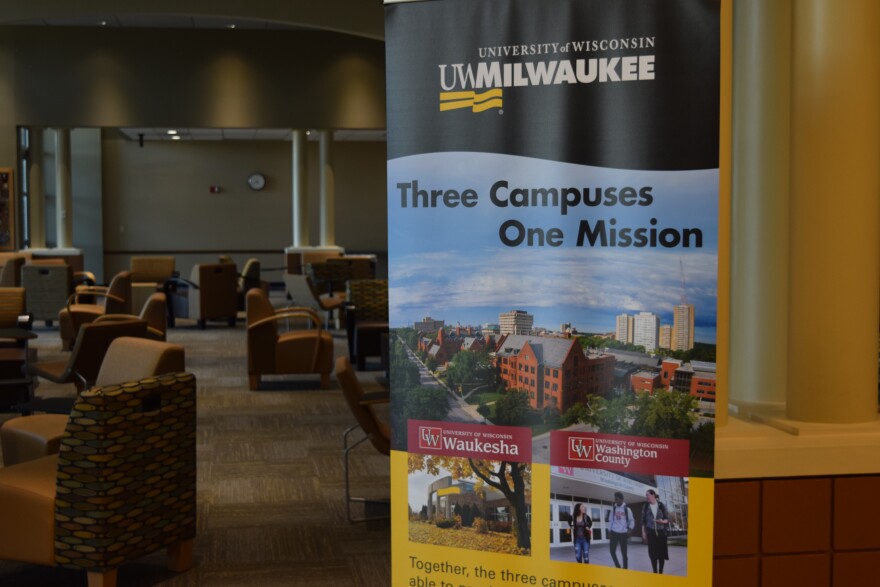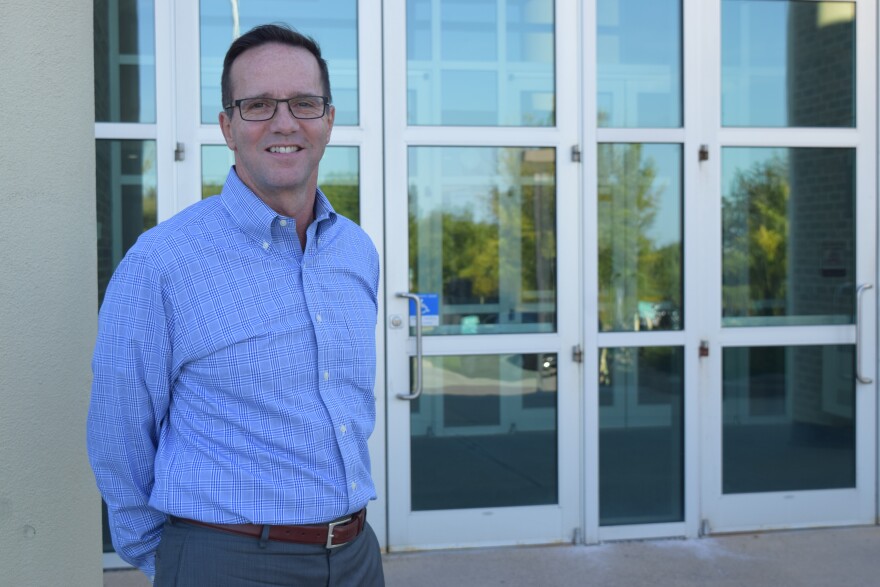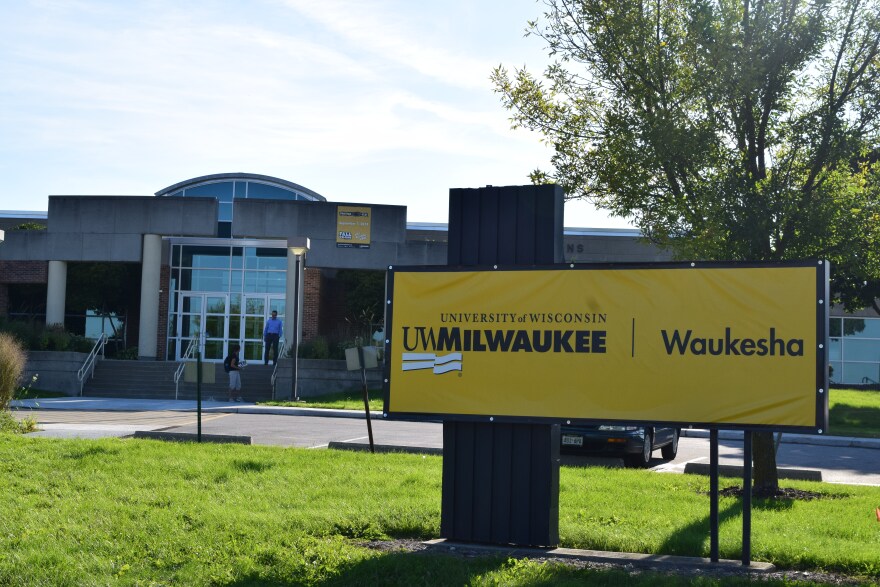Wisconsin’s higher education system is going through a quiet but major change. Beginning this school year, the state’s 13 two-year colleges are now branch campuses of four-year universities. The restructuring is an effort to keep the colleges’ doors open despite declining enrollment and revenue.
For example, Waukesha and Washington County colleges are now part of UW-Milwaukee. At the school formerly known as UW-Waukesha, new student Dennis Smith says he’s noticed a ‘giant rebrand.’
“Everything’s now UW-Milwaukee at Waukesha,” Smith said. “And they’re super, super – not strict, but they want to make sure you understand it’s not UW-Waukesha anymore.”

Students like Smith are adjusting to mostly superficial changes this year. The school colors are changing from red and white to gold and black. The mascot is changing from one big cat to another: cougars to panthers.
Perhaps the biggest question on the minds of students here is how the UW merger will affect tuition.
The former UW colleges have a mission of accessibility for low-income and first-generation college students. Close to half of students at the Waukesha and Washington County campuses are first-generation. The price of attending school at the colleges is about half of what you would pay at four-year universities like UWM.
Waukesha campus student Caleb Ebbott says that was a deciding factor for him.
“With how much tuition is and how harsh the penalties are for loans these days, there’s no way I could’ve put myself with that kind of debt,” Ebbott said. “And there’s really not a lot of other feasible ways I could’ve done this other than a technical college. I also partially care for my parents who are disabled, so it’s good to have something close by.”

Stephen Schmid is interim dean of the UWM College of General Studies, a new academic office encompassing the Waukesha and Washington County schools. He says there are no plans to increase tuition.
“Any tuition changes go through a very formal and lengthy process, so it’s not like it’s a switch that anyone can flip,” he said.
Schmid says this is a transition year for the branch campuses. They’re essentially operating as they did last year while working to merge functions like IT and HR with UWM for next school year. They must also reconcile differences in curriculum and faculty and staff structures.
He says the fact that all this is supposed to happen in two years is challenging.
“It’s an aggressive timeline, I don’t think anyone would disagree with that,” Schmid said.

UW System President Ray Cross pitched the college-university merger as a way to keep the two-year campuses open despite losses in student numbers.
Schools across the UW system are experiencing enrollment challenges. But the colleges are being hit especially hard. As a snapshot, enrollment at the Waukesha campus dropped 15 percent this year. Washington County saw a 13 percent drop. That’s compared to a 2 percent decline at UWM.
“The state of Wisconsin is getting older, there are fewer high school students graduating from high schools and entering into the pipeline of higher education,” said Schmid. “And so these are all real dynamics in the state of Wisconsin.”
On top of shrinking enrollment, state funding for the UW System has declined and a tuition freeze has restricted that important source of revenue.

At a Board of Regents meeting two months ago, UW President Cross said saving money isn’t the first priority in this restructuring.
“We’re working from the premise that our purpose is to make sure we expand opportunity and preserve these campuses,” Cross said. “One of the secondary outcomes is to save money.”
There are plans in the works to bring new opportunities to newly-adopted campuses like Waukesha. For example: If state funding comes through, UWM will expand its Bachelor of Science in Nursing program to the Waukesha campus next fall, with room for about 30 students.
Have a question about education you'd like WUWM's Emily Files to dig into? Submit it below.
_






